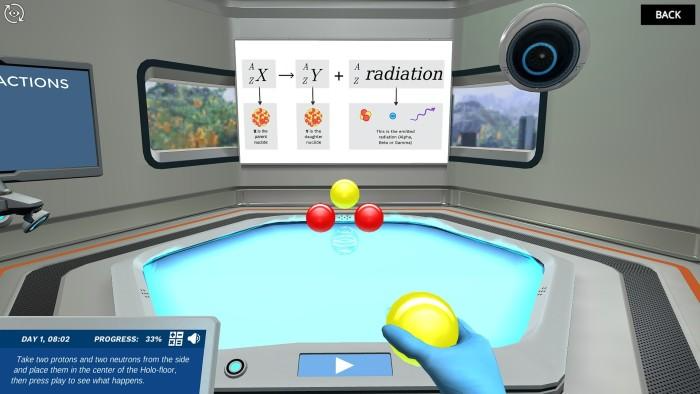
Radioactivity is a profound concept with numerous application in fields like medicine and energy production. This makes it an integral part of any academic curriculum.
However, teaching it can be challenging for instructors due to its abstract nature and complex equations, which are hard for students to digest. To overcome this hurdle, educators need to employ creative methods that spark curiosity and encourage exploration of this vital concept.
This article aims to unravel five creative pedagogies for educators, who are looking to inspire their students' curiosity in the intriguing world of radioactive decay.
Radioactive decay is a complex abstract concept, so traditional teaching methods often leave students confused. This complexity necessitates interactive models, which can bridge the gap between theory and visualization.
With interactive models, students can visually see the microscopic reactions in action. This stimulates students' interest and fosters a deeper understanding of the subject.
In this regard, an interactive model is offered by Labster's radioactive decay virtual lab. Within the simulation, students observe all types of radioactive decay, learn decay notation, and balance equations engagingly.

Chemistry lessons can often turn monotonous, draining the enthusiasm out of students. Games and activities can rectify this, transforming the teaching of radioactive decay into an interactive and fun experience.
You can design multiple activities can use to explain the concept of half-life and radioactive decay. Some interesting games include:
Today, digital technology and tools have revolutionized how educators can deliver their lessons. Technology aids in abstract concepts like radioactive decay being taught in a more engaging, digestible manner.
Virtual reality, online simulations, and 3D animations are some of the tools transforming traditional education. With simulations, it becomes much easier for educators to show the whole radioactive disintegration process in simple steps.
For instance, Labster's online simulation of radioactive decay offers a comprehensive, interactive learning experience. Through step-by-step guidance, students navigate the virtual lab and witness the intricate process of radioactive decay.

The simulation utilizes vivid 3D animations to illustrate the transformation of a radioactive atom into daughter isotopes. To reinforce understanding, the platform includes quizzes and provides real-time feedback.
Discover Labster's Radioactive Decay virtual lab today!
When students encounter seemingly dry concepts, they often question the practical relevance of their studies. To address this, educators can employ an inspiring teaching approach by connecting these lessons to potential career paths. It gives students a perspective of the professional applications of what they are learning, linking education with ambition.
For instance, you can mention how radioactive decay knowledge is used in several careers, such as nuclear engineers, radiation therapists, environmental scientists, and health physicists.
Furthermore, inviting professionals from these fields as guest speakers can provide students with firsthand insights into the practical applications of radioactive decay.
Teaching should always be backed by powerful real-world applications. When students recognize that radioactive decay isn't confined to textbooks, but has palpable effects in the world, learning becomes more exciting.
You can discuss the role of radioactive decay in carbon dating and how the process has been used by archaeologists to determine the age of fossils and specimen spanning several centuries.
Another application is in the realm of medicine, where radioactive isotopes are used in cancer treatments. Discussing how nuclear energy, powered by radioactive decay, is a significant global power source can also stimulate students’ interest.
A multifaceted approach to teaching radioactive decay can significantly enhance student engagement and understanding. Balancing theory with interactive models, games, and real-world connections creates a holistic learning environment.
Try our free 30-day All Access Educator's Pass today and teach with the Radioactive Decay simulation alongside 300+ other virtual labs!

Labster helps universities and high schools enhance student success in STEM.
Request DemoRequest a demo to discover how Labster helps high schools and universities enhance student success.
Request Demo